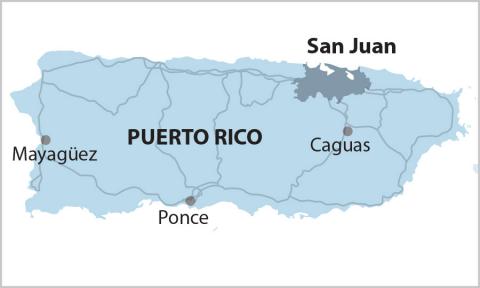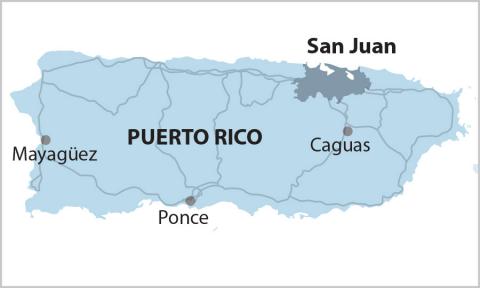Puerto Rico regulators fight against solar to benefit bondholders

Bondholders, not residents, are primary concern of Puerto Rico regulators
The recently certified fiscal plan for the Puerto Rico Electric Power Authority (PREPA) underscores once again the fundamental contradiction on the island between aggressively transitioning to renewable energy—producing fiscal relief—and paying off the bondholders of the bankrupt public corporation— producing fiscal stress.
The experience of Hurricanes Irma and Maria, coupled with ongoing poor reliability and electric rates that just reached 33 cents per kilowatt-hour (kWh), have driven a boom in rooftop solar in recent years. In 2021, more than 100 megawatts (MW) of distributed generation was added in Puerto Rico, and another 37 MW was added in the first four months of 2022.
Solar panels require the public to rely less on the electric grid.
The FOMB predicts that distributed generation (a category that includes industrial combined heat and power, but is about two-thirds residential and commercial rooftop solar) will account for more than 10% of electricity consumption on the island by 2026. Meanwhile, the centralized power system hasn’t added a single megawatt of renewable energy since 2016.
The reality is that the people of Puerto Rico have decided to take up rooftop solar on their own. The system is so badly managed, so unreliable and rates so high that ratepayers have taken it upon themselves to install solar panels. Solar panels require the public to rely less on the electric grid. The boom in rooftop solar has occurred with no government support to make rooftop solar more accessible to lower income households.
But the official response from the Financial Oversight Management Board (FOMB) in the latest fiscal plan proposes to suppress distributed generation. The plan certified by the oversight board argues in favor of eliminating the existing net metering structure—in which customers get paid at the retail electricity rate for surplus power sold back to the grid—and replacing it with a lower price. If the board’s proposed structure were adopted, customers would receive about 25% less for power sold to the grid.
Why are the FOMB, private grid operator LUMA, and PREPA fighting so hard against rooftop solar installations?
A sharp decline in sales occurs when people use solar panels, which means less revenue would come from electric rates to pay the bondholders of PREPA’s $8.2 billion in legacy debt.
The fee was designed to generate a revenue stream to pay bondholders
The defection of customers from the grid, coupled with a declining economy and population base, means that electric sales are projected to decline by as much as 50% over the next three decades, according to fiscal plan projections.
The PREPA debt restructuring agreement rejected by Puerto Rico’s governor earlier this year would have imposed a highly unpopular “solar tax”—a fee of between 2.7 and 4.6 cents/kWh on the electricity generated by rooftop solar. The fee was designed to generate a revenue stream to pay bondholders, even from customers who generate their own power.
The purpose of the board’s new proposal is the same—to discourage customers from adding solar so that more money can be available through electric rates to pay bondholders.
If the FOMB and bondholders wanted to support PREPA’s return to fiscal health so that it could again become a functioning utility capable of taking on new debt, the most important step would be to stabilize rates through investment in renewable energy. Instead, the FOMB is taking the short-sighted tactic of crippling the only functioning renewable energy initiative on the island to pay bondholders.
En Español: Reguladores de Puerto Rico luchan contra la energía solar para beneficiar a los bonistas

















